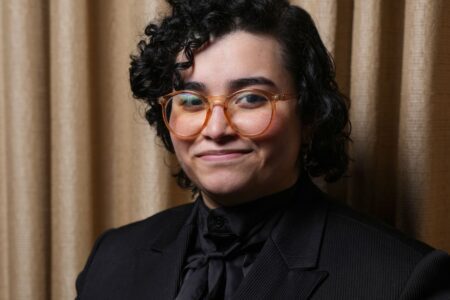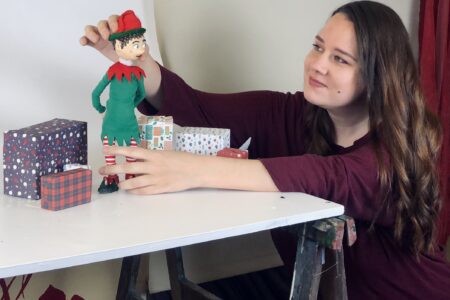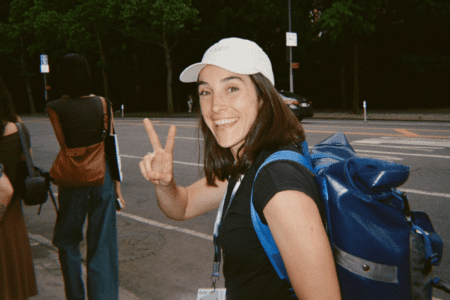
Eveline Sulistio was 15 years old when she was asked to make one of the biggest decisions in life: what to study at university.
The Glenunga International High School in Adelaide student then thought she still had at least a year or two before she had to choose.
But at Year 11, her teachers were already asking her to choose subjects that would help when applying to university in a couple of years.
She was told she had to take higher-level mathematics if she planned to study engineering at uni.
“I hadn’t really thought about it at that time, because I was still 15, 16, and I hadn’t thought that far yet,” says Sulistio.
The only thing she could think of to say was she liked maths and science – she was particularly interested in physics too – and asked them to recommend a programme.
And that’s how Sulistio ended up pursuing an engineering degree.

Sulistio (left) graduated with Honours from her civil engineering programme at Monash University. Source: Eveline Sulistio
The ups and downs of pursuing an engineering degree in Australia
That’s not to say Sulistio knew nothing else about engineering.
At that time, her older sister was pursuing a chemical engineering degree at Melbourne’s Monash University, so Sulistio had some ideas about what it’ll be like for her civil engineering programme at Monash.
Monash is ranked within the top 50 by the QS World University Rankings by Subject 2025 – and Sulistio’s experience reflected this.
“This is going to sound cheesy or cringe, but I actually liked the challenge,” says Sulistio.
“The classes were difficult, but it was interesting to learn about all those things. And even though I’m not doing civil engineering now, I can still see the reasons behind why cities or buildings are designed the way they are, so even if I don’t really remember all the details anymore, I still have that basic knowledge.”
At Monash, Sulistio studied the four streams of civil engineering – structural, geomechanics, traffic and water systems – majoring in the first two for her last year of study. By the end of her four-year programme, she graduated with Honours and was ready to move on to the next chapter: job-hunting.
Many graduates end up working at the companies they interned at during their third year ; as many as 93.3% of graduates secure full-time employment within four months of graduating according to Monash data.
However, given the competitive nature of the industry, it’s no surprise that some would fail to secure these local internships. Sulistio ended up completing her internship in Indonesia – perhaps, what she believes, the first strike to not being able to secure herself a job post-graduation.
“The other thing I didn’t do right, in my opinion, is that I didn’t stay in Australia after I graduated – I went home to Indonesia because my student visa had expired,” she shares.
Had Sulistio stayed, she would have needed to apply for the Temporary Graduate Visa, a post-study work visa that allows eligible international students who meet the requirements to remain in the country for a certain period.
Instead, Sulistio found herself struggling to look for jobs in Australia while in Indonesia — until an alternative path emerged, but in neither of these countries.

During her job hunt, Sulistio spent a year in Japan formally learning Japanese in a language school in Tokyo. Source: Eveline Sulistio
When one door closes, another opens
Having self-taught herself Japanese since she was a teenager, Sulistio had no problem speaking with natives fluently.
With no job on the line and still searching for one in Australia, she started learning Japanese formally.
Soon enough, she was packing her bags and joining a Japanese language school in Tokyo for a year.
“And I thought, maybe while doing that, who knows, I might be able to land a job in Japan,” says Sulistio.
Unfortunately, her job search in the Land of the Rising Sun didn’t bear fruit either. Due to the nature of the work, it was almost required of civil engineers in Japan to have pursued their studies locally.
The one silver lining of it all? By the time Sulistio had to return to Indonesia, she received good news: her Australian permanent residency application had been successful, and she could now continue her job search there.
Still, it wasn’t easy.
“So then I thought, you know what, let’s just get any job,” says Sulistio. “I made my search even bigger – everywhere, anywhere – anything I could apply to, I did it.”
And finally, her efforts paid off – just not in the way she expected them to.
“I played a lot of games since I was 15, and a lot of them were Japanese games,” shares Sulistio. “And I was looking at this website that had job openings in Japan for international people, and one of them was at a gaming company, so I gave it a try.”

Sulistio’s first job out of university was as an Associate Game Producer in Japan – something she didn’t see coming. Source: Eveline Sulistio
That one decision kickstarted a new chapter for Sulistio.
She’s now in Tokyo and working as an Associate Game Producer — both of which she never imagined would be part of her post-engineering degree life.
“Aside from being able to speak Japanese or having played a lot of games, I think my engineering degree kind of helped me get the job,” shares Sulistio. “Because when someone tells you they studied engineering, you’d probably think they are strong in maths, analysing data, and have a good attention to detail, so I think that’s what helped.”
In her role, Sulistio worked on the level design process, including player level design, puzzle stage design, map specifications, and puzzle gimmicks – similiar to what she learned in university.
And that marked the end of her potential career as a civil engineer and the start of her work as a game producer.

Sulistio (second from left) pictured with her team at Playside Studios, where she worked as a game producer. Source: Eveline Sulistio
The hard work that goes into being a game producer
So far, Sulistio’s been crushing the game.
Some of her projects include working on “Civilization VII – VR,” an award-winning turn-based strategy video game, and “Horizon Worlds,” an online virtual reality game with an integrated game creation system that allows players to move and interact with each other in various worlds that host events, games, and social activities.
Of course, she’s not alone in the work; all around her, Sulistio works with a team of creatives to deliver these games to the public, and it comes with its own challenges too.
“I think one of the most difficult skills to have as a game producer – and I see a lot of people struggling with this – is learning how to communicate with different people,” says Sulistio. “You need to be able to switch and adjust, because all games are team projects, right? So knowing how to get everyone on board with the same thing isn’t easy.”
The second challenge? Being able to lead a team without actually telling them what to do.
“When some people start their work as a game producer, they might think that they make all the decisions,” says Sulistio. “But in my opinion, producers don’t make decisions; we just guide the team to reach the decision or the final product of what they want to do.”
And last but not least, one major hurdle that game producers – and perhaps other creative leads – will have to tackle over and over again is convincing the team that the client’s decision isn’t actually that bad.
“Because if the team sees the client’s choice as a bad decision and that they have no choice but to do it, they wouldn’t enjoy working on it,” explains Sulistio. “So if it’s a decision that you can’t change, you have to be able to convince the team that it’s good.”
And as if those weren’t great tips already, Sulistio has one last piece of advice, especially for those who want to get a good head start on the inevitable job-hunting game: connection is key.
“I didn’t like the idea of using connections when I was in university because I didn’t want to get a job because of a connection – I wanted them to see me for my skills,” says Sulistio. “Of course, I still want that, but now I know they won’t even see your skill if they don’t know who you are, so you have to start with building connections.”

Sulistio is now a Development Director at Maxis Studios – Electronic Arts, who are famously known for being the creators of the ever-expanding Sims world. Source: Eveline Sulistio
At the end of the day, Sulistio simply wants to make games that leave an impression.
“I know game producers who aim for a game that people would just play forever, and that’s nice, but it’s also very difficult to get people to stay with one product for a long time,” she says. “So I understand people jump off after they’re done, but I want them to, in the future, think about the games I helped produce again and still think it’s enjoyable.”
It’s the same feeling Sulistio gets when she plays interactive horror dramas “Until Dawn” and “The Quarry,” and the action-adventure game “Ghost of Tsushima.”
“I really enjoy games with a focus on narrative, which ‘Until Dawn’ and ‘The Quarry’ are, and they have many different branches,” says Sulistio. “But ‘Ghost of Tsushima,’ has a linear story, but it’s so good that it’s still enjoyable even after playing it multiple times.”










